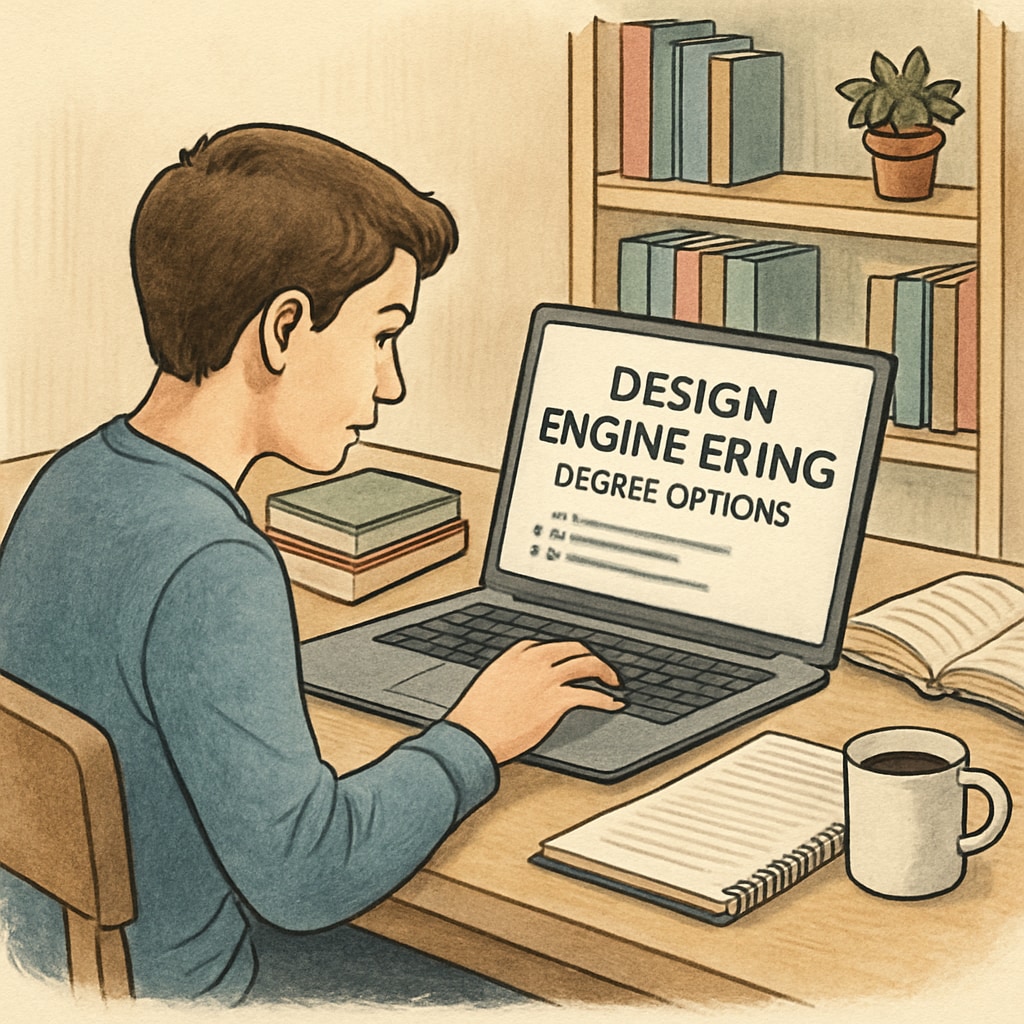In today’s fast-evolving world, the intersection of design engineering, degree choices, and career development has become a critical consideration for K12 students. As demand grows for engineers with creative problem-solving skills, laying the groundwork for informed decisions early in life can make all the difference. This article delves into how educators and parents can help students navigate the intricacies of academic and career planning in design engineering, ensuring a robust foundation for future success.
The Role of K12 Education in Design Engineering
K12 education serves as the cornerstone for shaping a student’s future career path. It is during these formative years that students are introduced to critical thinking, problem-solving, and creativity—skills essential to design engineering. For instance, exposure to STEM (Science, Technology, Engineering, and Mathematics) programs and hands-on learning projects can spark an interest in engineering disciplines.
Moreover, early identification of a student’s strengths and interests can guide them towards appropriate academic choices. Schools offering specialized STEM tracks or extracurricular activities, such as robotics clubs or design competitions, provide valuable opportunities to explore engineering principles in action. These experiences can ignite a passion for design engineering and help students envision their future careers.

Choosing the Right Degree in Design Engineering
When it comes to selecting a degree in design engineering, students often face a crossroads. The choice between a general engineering degree, a specialized design-focused degree, or even interdisciplinary programs can have long-term implications for career development. Understanding the pros and cons of each option is crucial for making an informed decision.
For example, a general engineering degree offers broad technical knowledge, making it versatile for various career paths. On the other hand, specialized programs in design engineering emphasize creativity and innovation, preparing students for roles in product design, industrial engineering, or user experience (UX). Interdisciplinary degrees that combine engineering with business or computer science can further enhance career prospects by equipping students with diverse skill sets.
Parents and educators should encourage students to research universities, program curricula, and industry trends. Partnering with professionals in the field through mentorship or internships can also provide valuable insights. For a deeper understanding of design engineering, visit authoritative sources such as Wikipedia’s Design Engineering page.

Career Implications of Degree Choices
The degree a student chooses can significantly impact their career trajectory in design engineering. For instance, graduates from specialized design engineering programs may have a competitive edge in industries like automotive design, renewable energy, or consumer electronics due to their focused expertise. Conversely, those with broader engineering backgrounds may find it easier to pivot across various fields.
It’s also worth noting that some careers in design engineering, such as systems engineering or advanced research roles, may require postgraduate education. Encouraging students to think long-term about their goals—whether they aspire to leadership positions, technical expertise, or entrepreneurial ventures—can help frame their academic journey. According to the U.S. Bureau of Labor Statistics, engineering roles are expected to see steady growth, and fields emphasizing design and innovation are particularly promising (source).
Practical Tips for Educators and Parents
Supporting K12 students in their journey towards a career in design engineering requires proactive measures from both educators and parents. Below are some actionable tips:
- Encourage Exploration: Provide opportunities for students to participate in hands-on projects, STEM fairs, and design workshops.
- Foster Critical Thinking: Integrate problem-solving exercises into the curriculum to develop analytical and creative skills.
- Promote Research: Help students explore degree programs, career options, and industry trends through online resources and professional networks.
- Offer Mentorship: Connect students with professionals in the field who can share insights and real-world experiences.
- Support Soft Skills: Emphasize communication, teamwork, and adaptability, which are highly valued in engineering careers.
By taking these steps, parents and educators can empower students to make informed decisions that align with their aspirations and the demands of the job market.
The Future of Design Engineering Careers
As industries continue to evolve, design engineering will remain a pivotal field, driving innovation and addressing complex challenges. For K12 students, the ability to make well-informed academic and career choices can open doors to exciting opportunities. Educators and parents play a vital role in guiding students through this journey, ensuring they are equipped with the skills, knowledge, and confidence needed to thrive in the dynamic world of design engineering.
Ultimately, the intersection of design engineering, degree choices, and career development offers limitless possibilities for those prepared to embrace them. By fostering curiosity, encouraging exploration, and providing the right support, we can help the next generation of engineers build a better future.
Readability guidance: Use clear headings and concise paragraphs to enhance readability. Include actionable tips and authoritative links to add value. Avoid jargon, and maintain a professional yet approachable tone throughout.


